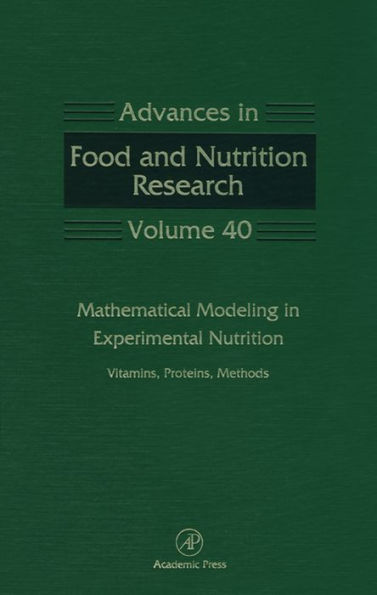Table of Contents
Vitamin Metabolism: M.H. Green and J.B. Green, Quantitative and Conceptual Contributions of Mathematical Modeling to Current Views on Vitamin A Metabolism, Biochemistry, and Nutrition. J.A. Novotny, L.A. Zech, H.C. Furr, S.R. Dieker, and A.J. Clifford, Mathematical Modeling in Nutrition: Constructing a Physiologic Compartmental Model of the Dynamics of Beta-Carotene Metabolism. J.E. Swanson, K.J. Goodman, R.S. Parker, and Y.-y. Wang, Experimental Approaches to the Study of Beta-Carotene Metabolism: Potential of a 13C Tracer Approach to Modeling Beta-Carotene Kinetics in Humans. J.F. Gregory, III, and K.C. Scott, Modeling of Folate Metabolism. B.-F. Lin, J.-S. Kim, J.-C. Hsu, C. Osborne, K.Lowe, T. Garrow, and B. Shane, Molecular Biology in Nutrition Research: Modeling of Folate Metabolism. S.P. Coburn, Modeling Vitamin B6 Metabolism. Protein and Amino Acid Metabolism: R.J. Beynon, C. Bartram, A. Flannery, R.P. Evershed,P. Hopkins, V. Toescu, J. Phoenix, and R.H.T. Edwards, Interrelationships between Metabolism of Glycogen Phosphorylase and Pyridoxal Phosphate: Implications in McArdle's Disease. D. Hanes, L. Zech, J. Murrell, and M.D. Benson, Metabolism of Normal and Met30 Transthyretin. M.J. Gahl, T.D. Crenshaw, N.J. Benevenga, and M.D. Finke, Use of a Four Parameter Logistic Equation and Parameter Sharing to Evaluate Animal Responses to Graded Levels of Nitrogen or Amino Acids. Energy Metabolism: W.W. Wong, Total Energy Expenditure of Free-Living Humans Can Be Estimated with the Doubly Labeled Water Method. Methods for Obtaining Kinetic Data: E.M. Janle and P.T. Kissinger, Microdialysis and Ultrafiltration. P. Proulx, Membrane Vesicles. J.D. Turner, A. Delaquis, and C. Malo, Culture of Mammary Tissue: Glucose Transport Processes. Simulating Complex Metabolic Processes: L.P. Mercer and D.S. Kelley, Analysis of Bioperiodicity in Physiological Responses. A.R. Shultz, Nutrient–Response: A"Top Down"Approach to Metabolic Control. R.B. King, Modeling Membrane Transport. Computational Aspects of Modeling: W.F. Beltz, Estimation and Use of Kinetic Parameter Distribution in Metabolism and Nutrition. R.C. Boston, T. McNabb, P.C. Greif, and L.A. Zech, Essential Numerical Supports for Kinetic Modeling Software: Linear Integrators. J.A. Jacquez, Indentifiability. S.I. Sayegh, Dynamic Systems and Neural Networks: Modeling in Physiology and Medicine. H. Zhang and Z. Zhang, Graph Theoretical Methods for Physiologically Based Modeling. Chapter References. Index



